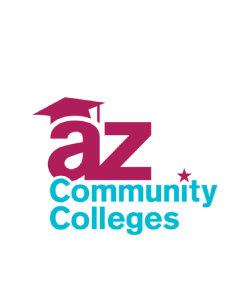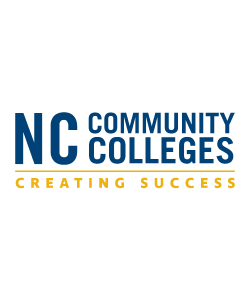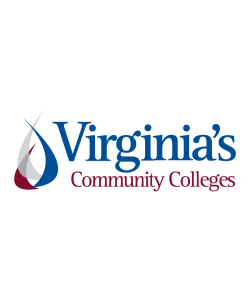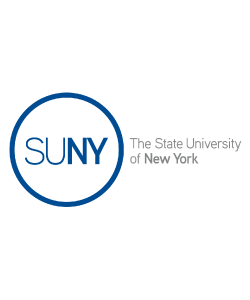
EAB Thought Leadership
Stronger Together:
Embracing Shared Services for Survival
By George Pernsteiner, CampusWorks Executive Advisory Board Member
Former President, State Higher Education Executive Officers Association
Former Chancellor, Oregon State University System
An Alarming Prediction for Higher Education
More than a decade ago, Michael Horn, co-founder of and a distinguished fellow at the Clayton Christensen Institute for Disruptive Innovation, predicted that within ten years up to a quarter of American colleges would close or merge. Although his prediction has not yet come true, he was directionally right. More than 120 colleges have closed since 2016. Some were for-profit institutions, but many were non-profits. Branch campuses have closed in Wisconsin and other states as universities seek to adjust to financial and enrollment realities. Mergers of public institutions have been bruited by governors in Pennsylvania, Oklahoma, and South Carolina this year, and a legislator in Mississippi is calling for the closure of three of that state’s public colleges and universities.

George Pernsteiner
College enrollment in the United States peaked nearly 15 years ago and now stands at 90% of its former high. Demographic trends suggest a coming steep decline in the number of Americans aged 18-24, the traditional sweet spot for college enrollment. Large, well-known universities, seeing this trend, have stepped up recruiting and many are at or near the highest enrollment levels in their history. This has left smaller and less known institutions staring at the results of double-digit enrollment declines. Many have turned to steep tuition discounting to build their classes, often realizing less than half the sticker price in net tuition revenue.
Many have pointed to the 40 million adults who started college but left without earning a degree. Might they not be the source of students to keep college enrollment robust? They already have shown an interest in college, so why not lure them back? But the reasons these former students left college may be at least as persuasive today as they were when the students stopped out: family, financial, fit, academic—those issues may not magically have been resolved. And even if they have, the services adult students need are not the same as those sought by 20-year-olds. This adds new cost and culture challenges for colleges to address before they can successfully recruit and educate these adults.
Parallel to the demographic changes and new challenges has been the emergence of strong narratives that college is not needed for most jobs and rewarding careers, that college is too expensive and is a debt-inducing waste of time and money, and that college indoctrinates students into an ideology at odds with traditional American values.
The net result of all these trends will be that more and more colleges and universities will face significant and even existential financial challenges. The financial consequences of these trends have been forestalled temporarily by federal COVID-related subsidies. Similar subsidies helped most states avoid the kinds of draconian budget cuts that accompany recessions, something that aided public colleges significantly because theirs is the appropriation most readily reduced by states in woeful budget times.
But the end of federal COVID funds and the reductions being made now by a few states in public higher education are harbingers of difficult financial times for many institutions.
Post-Pandemic Panic
Higher education is an optimism business. After all, it is about educating students for a better future for them and their families and about advancing the frontiers of knowledge to benefit people and planet. This fundamental belief in a better future, so essential a part of higher education’s ethos, is at odds with the mental and emotional framework needed for reducing budgets.
For at least the past century and half, American colleges often have faced budget challenges—and nearly all the colleges have survived. So, why worry now? For most of that time, the United States had a growing population, many of whom were young. In the post-World War II era, this was coupled with a view that more education would lead to a better economy and better lives. Population growth has now slowed to levels that suggest that in future decades the country may be hard pressed to replace its current workforce with younger workers. And the narrative that college is expensive and unnecessary has taken hold in ways that make it more difficult to convince students to enroll.
So, colleges and universities (except for the elites and the flagships) are likely to face significant headwinds in their efforts to recruit and retain enough students to sustain themselves without reducing spending. And the likelihood of recessions that will lead to large reductions in state appropriations for public higher education cannot be discounted. Recessions have been part of America’s economic reality for decades.
This is not intended to dissuade institutions from seeking to enroll more students. Obviously, their survival, health, and missions may demand they do so. They each need to determine their own strategies for enrollment stabilization or growth based on what distinguishes them from other colleges (mission, location, program excellence, athletic prowess, connection to community, student services, industry need, etc.) and what makes enrolling in college a more attractive alternative than post-high school drift, short-term training, immediate jobs, and non-college credentials. And they must focus on those students who would be most attracted by their distinguishing characteristics. But the enrollment headwinds faced by many colleges may force them to cut budgets, at least until enrollment strategies pay off or other alternatives present themselves.
Reducing spending is never easy for an individual, for a family, for a business, or for a college. Cutting budgets for a college goes through several predictable stages (once the president, the cabinet, the deans, the faculty, and the college community get past the denial stage). First, the college seeks new revenue (from increased enrollment, from space rentals, from licenses of intellectual property or athletics sponsorships, from the wide variety of sources that inventive faculty and administrators can conceive). Although there may be some longer-term increases, little usually is gained in a short period of time if student enrollment cannot be ramped up quickly—something that is becoming less and less likely for most institutions.
Next comes the across-the-board freezing of travel, purchases, and vacant staff positions. “We’ll get through this together, and it won’t be long.” This strategy staves off the reckoning but rarely can address a major or systemic revenue loss, such as would be occasioned by enrollment loss or a large cut in state funding.
Then, institutions cut administrative and support costs, taking care to do as little harm as possible to student-facing services and faculty teaching and research (which are defined as core). While popular with some faculty, this stage also may be limited in its efficacy if the reason for the reduction is a long-term decline in revenue. Unlike the temporary nature of the first few stages, this one can reduce the long-run cost basis of the institution if done carefully and sustained over time. But the argument that everyone is in the boat and rowing in the same direction breaks down as layoffs and office closures become the order of the day in some parts of the institution while other parts seem largely unaffected.
Further stages involve reducing student-facing and academic support areas, eliminating at least some adjunct faculty positions, paring or eliminating low enrollment programs, terminating faculty, and merger or closure.
The process is painful and reductive. The institution’s leaders are in turmoil and their community (faculty, staff, students, alumni, donors, etc.) are in different phases of panic or denial.
Seeing Opportunity in Moments of Crisis
Some leaders see moments of crisis as an opportunity to build on their institution’s strengths and focus more sharply on what their college does best and what it was intended to do and be (its purpose and mission).
The distinction and distinctiveness of a college usually is tied to its faculty. The expertise of the faculty and their ability to inculcate and advance knowledge is key to the higher education enterprise and to the success of an individual college or university. That does not mean that all faculty are stars or that each program is essential for the college or university to meet its purpose and thrive. But it does mean that the heart of the institution is its faculty and their skills and abilities to teach students, conduct research, and extend their knowledge and work beyond the campus.
Virtually every college or university would agree with the centrality of the faculty to its existence. But colleges and universities are complex organizations with many functions, constituencies, and motivations—all of which have claims on the institution’s time and treasure.
So, even when leaders elect to focus on faculty and program and seek to redefine or even jettison other aspects of their institutions, the constituencies of those other aspects (employees, labor organizations, boosters and donors, community members, etc.) mount active and convincing campaigns to preserve them in their current state. Colleges and universities have become much more than education and research engines. They offer entertainment, cultural enrichment, community centers, economic development, health and wellness facilities and services, and a host of other functions that benefit not just their students but entire swaths of the communities and regions where they are located.
It can be difficult for a college or university leader to keep focused on the primary purposes of education and research when their institution has become such an important part of the lives of so many people who are neither students nor employees.
But the centrality of education and research must guide leaders’ decisions in times of financial challenge—particularly if that challenge is likely to be sustained for a long period of time (such as with enrollment decline in much of the United States). A relentless focus on the purpose and mission of the institution, why it exists, is key to effective planning for a sustainable future.
Careful consideration of how the college or university does its business is essential. What must we do? What are the legal constraints on how we do it? What resources are generated or consumed by what we do and how do we do it? Those uncomfortable questions confront any leader once a college or university has passed beyond the stage of freezing positions and travel.
Nearly a thousand years ago, scholars in Europe banded together to form the first western universities. They did so, at least in part, to reduce the burden on each individual scholar to find students and pay for the costs of instruction and their own upkeep. Obviously, then, some level of support has always been necessary for a university to serve its primary purpose. The key, though, is that essential support services are needed so the university and its faculty can fulfill that primary purpose. What those services are and how they are provided are not etched in granite. The recent pandemic and the impetus it provided for online education showed that the universities as cathedrals of learning need not always be housed in monumental buildings but can be “zoomed” through the ether.
Support services come in many varieties, some student focused (advisors) and some institution focused (facilities). All exist to aid the institution and its faculty to educate students and advance knowledge. Often, these services are essential for student learning and progress and for the conduct of leading-edge research. These are important activities. But how they are provided and who provides them is not obvious. The focus of any consideration of these activities must be on their outcomes and not on how those outcomes are achieved. That students need a clean and safe place to learn may be a given but who cleans and secures it and how are is not foreordained.
This introduces a potential conflict between fulfilling the purpose of an institution (educating students) and how that is done. Even if there is agreement about the primacy of the faculty in educating students, others at the institution will insist that providing support in the way they currently do is essential for the success of the students and the continued excellence of the institution.
The Case for Shared Services
Sharing services within and among institutions often has been linked to efforts to save money so that the institution(s) can focus on their purpose. Sharing support services and systems also can improve the quality of services because they are provided by an organization and people whose sole job is to provide them and whose expertise is in doing so.
But efforts toward sharing often have foundered for any of three main reasons: (1) a belief that a “real” university (or school or department) provides all its own services because no one else can possibly know how to do so effectively and, anyway, this is how Harvard, or Michigan, or Wash U or some other aspirational peer does it (or we think they do); (2) managers, employees and labor organizations have a vested interest in providing services the same way they do now; and (3) even if the institution chooses to have someone else do something, key employees may continue to operate shadow services and systems because they believe their personal control is essential for effectiveness.
How do leaders overcome these challenges to logical and money saving service sharing initiatives, be they within or among institutions? To do so effectively and sustainably requires strong and sustained executive leadership and a culture shift within each of the organizations contemplating service sharing. (Sharing services in this context means that multiple departments or institutions partake of commonly provided services. It does not matter whether these services are provided centrally by an institution, by a consortium of institutions and a common shared service entity, or by a third-party contractor (often termed “managed services”). The key is that services are shared across the school or institution and are provided by an entity charged with and skilled at doing so.)
Sharing By Example
Although examples abound of sharing courses or whole academic programs among institutions (e.g., within state systems of institutions or in a geographic area), most sharing is of support services within or among institutions. These may be in information technology (IT) and communications infrastructure; student, finance, and human resource enterprise data systems; legal and risk management services and programs; purchasing and contracting; human resources and labor relations; transportation; facilities management and maintenance; construction management; financial aid processing and reporting; pre- and post-award research accounting; accounting and treasury services; security and police services; food services; student and faculty housing; health and wellness, etc.
All these services, if provided well, demand specialized expertise not usually found in an academic department, school, or college but which are needed for an effective learning environment.
Here are some examples of shared services arrangements that CampusWorks has supported:

Green Mountain Higher Education Consortium (GMHEC)
CampusWorks facilitated a shared enterprise resource planning (ERP) transformation initiative for three neighboring private institutions in Vermont: Middlebury College, Chaplain College, and Saint Michael’s College. CampusWorks’ ERP experts led workshops and listening sessions for leaders across the colleges to understand the current enterprise system landscape and gather insights on current performance and improvement areas. Their findings led CampusWorks to recommend that GMHEC pursue two distinct solutions — one for Finance and Human Capital Management and another for Advancement. CampusWorks led the development of two comprehensive requests for proposal (RFPs) reflecting the collective needs of the colleges and assisted in evaluating vendor responses and demonstrations. All three colleges unanimously decided to implement both solutions, and CampusWorks oversaw the successful implementation and rollout.

Vermont State Colleges
CampusWorks conducted an assessment and guided the development of a new shared services entity for three diverse Vermont private colleges. This initiative streamlined Finance and Human Resources (HR) business processes, paving the way for a state-of-the–art cloud-based Finance and HCM/Payroll system. Now in operation, the colleges enjoy shared procurement, payroll, and IT support services, marking a new era of collaborative efficiency.

Arizona Community College Coordinating Council (AC4)
CampusWorks conducted a feasibility assessment to determine the viability of a shared service environment for six independent Arizona community colleges to purchase, implement, and share a new cloud-based ERP/SIS solution. CampusWorks’ unbiased perspective determined that of the six, only two institutions were positioned to move forward with a new system. Today, CampusWorks is working with those two institutions to help them transition to a new, shared solution.

Collaborative for Higher Education Shared Services (CHESS)
CampusWorks is supporting a comprehensive shared services entity that started with five — and has now expanded to six — independent community colleges in New Mexico. This consortium, serving a diverse student population, has merged various business functions, and is already benefiting from a shared cloud solution for Finance and HCM/Payroll. The operation continues to grow, encompassing shared services in Payroll, ERP/student information system (SIS) support, and comprehensive change management programs, with plans to expand into Financial Aid and cybersecurity.

Minnesota State
CampusWorks’ state-wide assessment led to the unification of major business processes among Minnesota’s 30 colleges and seven universities, resulting in an RFP for a new cloud-based ERP/SIS system. CampusWorks facilitated the project through the evaluation and selection of the new shared ERP solution, which is currently in the implementation phase.

North Carolina Community Colleges System
CampusWorks conducted a comprehensive assessment of the unique ERP environments operating across 58 institutions in the North Carolina Community College System. The resulting recommendation for a shared cloud-based ERP/SIS system is set to transform the way these colleges operate, streamlining processes and enhancing efficiency.

Oregon Community Colleges Association
CampusWorks conducted a Technology Assessment for eight geographically dispersed, independent Oregon community colleges, which led to the development of an ERP RFP supporting their consortium procurement strategy. This assessment was crucial in determining the best path for replacing an outdated homegrown ERP system with a modern, cloud-based solution.

Virginia Community College System (VCCS)
CampusWorks conducted a state-wide cybersecurity assessment, encompassing 23 community colleges, an existing Shared Services Center, and the System Office. This project focused on implementing consistent security policies and procedures under a shared services data governance framework, enhancing the overall security posture of the colleges.

State University of New York (SUNY) Community Colleges
CampusWorks coordinated the development of a shared services operation for institutional research across three SUNY community colleges. This collaborative project allows each institution to contribute to and benefit from a comprehensive research and planning office, enhancing their analytical and reporting capabilities.
Fostering a Culture of Sharing
A culture shift helps ensure the long-term success of a shared services arrangement. Without it, such arrangements may achieve short-lived success in which money is saved early on but costs creep back because people’s beliefs have not changed. Eventually, people (especially those formerly charged with providing the services or those with more money) question if they really are saving any money (or even care to do so) and want to revert to providing the services themselves.
Effecting a shift in the culture of an institution is a difficult task and always must be guided by the institution’s mission and purpose. An effective leader will state clearly why services should be shared (e.g., for efficiency, effectiveness, cost savings, to permit reinvestment in the academic core, or to mount a new program), and establish a process to listen to all voices and engage those knowledgeable about and affected by the services involved. One example of a successful method is the Process Reimagine and Redesign effort so effectively employed by CampusWorks. This permits everyone to have a voice and a hand in defining the shared services method and model. Even if the model winds up being technology-based, its development is very much a human-centered process. The active participation and buy-in of all key constituents are enabled by an effective process and results in a sustainable shared approach that the participants embrace. This leads, too, to a shared vision and a shared understanding and to the ability to adjust and change in the future based on a shared set of principles, values, goals, responsibilities, understandings, and clearly articulated boundaries.
A carefully designed and thoughtfully executive collaborative and inclusive process can be completed in weeks, not years—a critical factor during a time of financial crisis. But it must also consider needed transitions of processes, people, and ideas so that change can be made effectively. This requires clarity, compassion, persistence, and strong leadership.
Sustaining that culture is essential to the long-term viability of the shared services arrangement. Regular and frequent engagement of the key constituents is essential both to maintain their agreement and enthusiasm and to identify needed changes or new opportunities.
Sustaining Shared Services
Once services are shared, that joint commitment is essential so that the benefits are available to and understood by everyone who is part of the agreement. Inevitably, someone will want to break off and try to restore independent and individuated services. Doing so would undermine the efficacy of the arrangement and reduce the benefits for everyone else. That points to the importance of continuing active engagement and communication so that any real needs and interests of those who seek to go their own ways can be addressed effectively by the shared services entity and the others served by it. Matters cannot be permitted to drift, even if it appears that everything is going well. Those affected must be engaged frequently to ensure both their continued acceptance of the value of the shared services and provide a real time assessment of the effectiveness of the shared services and identify ways to improve them. Quality matters. So, too, does the perception of quality by those served by the sharing. Both are as important to sustaining shared services as are cost savings. And all three are essential elements of accountability.
Sometimes, sharing services across multiple colleges and universities is mandated by forces outside the academy, such as state elected officials. The motivation of state leaders often is related to saving money so that costs to both students and the state can be minimized. This external and top-down mandate often is resisted by campus staff at some or even all the campuses involved. This places even more acute pressure on institutional or system leaders because the usual resistance by affected staff can be magnified by a belief that the entire effort is unfair and unnecessary because they (the staff) believe the perceived budget problems could be resolved locally. This can lead to resistance both to the idea of sharing, to its launch, and to sustaining it. (Memories at colleges and universities can be long, with slights and perceived wrongs from 30 years ago being as fresh, poignant, and problematic as if they had occurred last week.) But the fact that the mandate came from outside the college does not make sharing the wrong solution. This places even more pressure on campus leaders to clearly articulate the purpose of sharing and to engage affected staff in a very purposeful and sustained process. The process is the same as if the idea for sharing came from within the institution but the diligence with which the campus leaders need to develop, deploy, and sustain the services is heightened.
Sharing services can reduce costs in the short term and hold them down over time so that financial challenges can be addressed more effectively by institutional leaders focused on the real mission and purpose of their college or university. But, like everything else in life, they must be continuously scrutinized and improved to meet their purpose and continue to provide optimal value. The goal of sharing services is to provide what institutions and their faculty need to educate students and advance knowledge and to use as few of the institution’s limited resources to do so as possible—both now and into the future.

